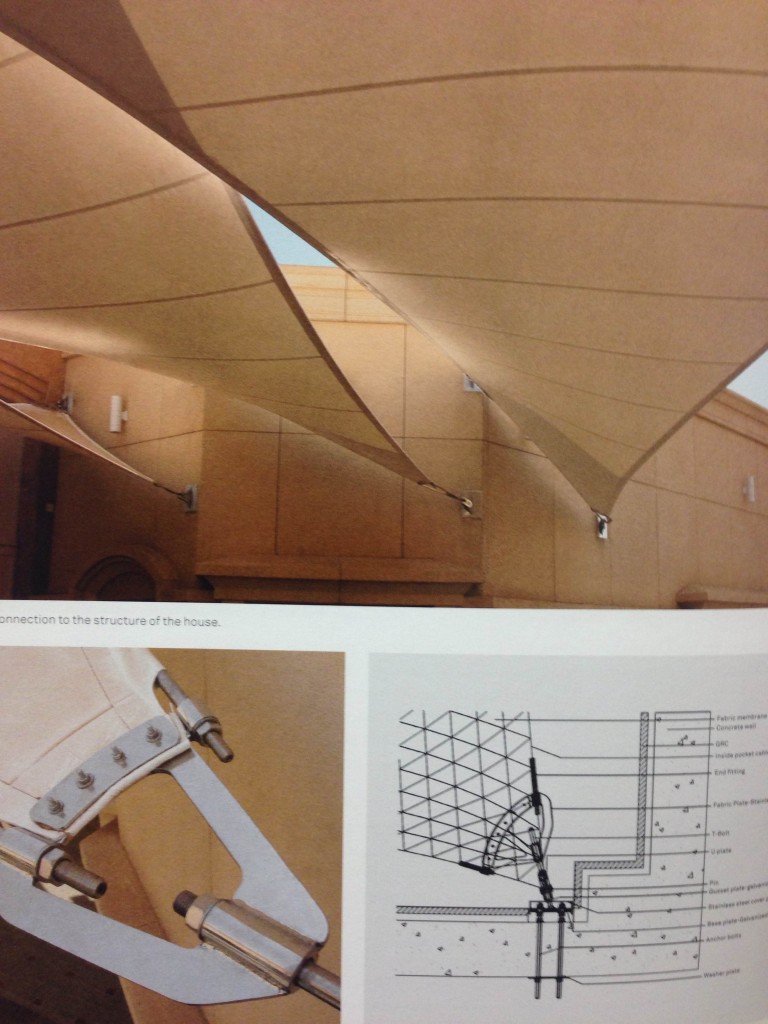In our flurry of interior design-centric posts these past few weeks, we lost sight of one of the coolest features of the Architecture & Planning Library: the NEW BOOKS TABLE! As someone who frequently makes impulse purchases of books over fashion (seriously – my roommate was totally confused by the three boxes of books that arrived in one week, and equally confused by my uncontrollable excitement), few things make me happier than a table full of new opportunities for discovery.
In one of my courses, we’ve spent a number of weeks documenting campus buildings and figuring out exactly how their components work together to form a both a functional and beautiful architectural system. This has rekindled my awareness of one of the reasons architecture fascinates me so much: how in the world does it work?
In a new book called Flexible Composite Materials in Architecture, Construction and Interiors, the behind-the-scenes is revealed for built projects around the globe that employ complex textile membranes as major design features. The book is divided into three sections: textile materials and their properties; materials and their uses in architecture, interior design, solar protection, and facade treatments; and various examples of applications with a series of select projects in countries ranging from Switzerland to Saudi Arabia.
This book starts by addressing exactly how textile membranes are engineered, delving into fiber recycling and the principles of load analysis, cable tension, curvature, and more. The steps involved in realizing intended forms are explained with a high degree of clarity, boiling down the processes of solving complex equations and making underlying concepts accessible by anyone. (I sent a few snippets of text to a friend who works as a structural engineer, and even he said that the descriptions were more clear than some of his former textbooks; I’ll take his word on that!). I especially appreciate this insight into manufacturing details, as many texts that highlight architecture projects tend to pass the early phases up in favor of more impressive photographs of the end result. In my opinion, the design process is just as interesting as the final product.
Featured applications include bicycle shelters, major athletic stadiums, pop-up exhibition and performance spaces, building cladding, external branding, solar protection through translucent panels, and much more. The text mentions that textile research closely observes our natural environment, and has the opportunity to evolve from being our second skin to “our building’s second skin”, all while being protective AND visually inspiring. This concept lines up with architecturally-related sustainability ventures that are consistently being pursued around the world today.
If you’re like me and easily fascinated by feats of architecture and construction, or interested in the research of new materials that contribute to breakthroughs in the fields of sustainability or structural engineering, I highly recommend immersing yourself in the processes and results outlined in this book. If anything, it will really make you want to attend a major European soccer game – those stadiums are out of control!
Call Number: NA 4160 F59 2013
Check out more new available books on our Recent Arrivals Feed.



